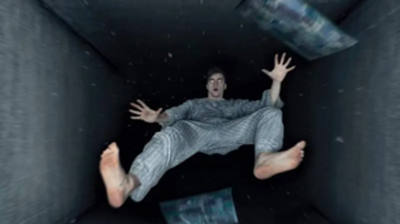Entertainment
The Interpreter Assessment. The Trump Tower Assembly revisited. – New York Theater

In June 2016, on the peak of the Presidential election, a Russian lawyer named
Natalia Veselnitskaya met at Trump Tower with Donald Trump Jr. and 6 different folks, reportedly telling the candidate’s son that she had incriminating details about Trump rival Hillary Clinton.
One of many eight folks on the assembly was the Russian-American interpreter Veselnitskaya had employed, as a result of she didn’t converse English.
A lot was manufactured from this assembly after it was made public the next yr, changing into the topic of Congressional hearings and investigations and the continuous reporting of element after element after element as they emerged – what result in it, what was actually stated, what got here out of it
Playwright Catherine Gropper apparently noticed play within the story of this minor participant at this assembly, after she had “an opportunity encounter with a famend Russian-American interpreter simply earlier than Covid,” as she writes in this system. That is presumably the identical Russian-American interpreter who was on the Trump Tower assembly (whose identify she doesn’t point out – and requests that I not dig up from the experiences; I’m guessing that is to guard no matter privateness he has left.)
I might see an enticing play usual from the interpreter’s story, maybe a manner so as to add readability and perspective to what’s in some methods a seamless saga. However “The Assembly: The Interpreter” isn’t that play. Certainly, it’s flabbergasting how laborious the manufacturing works at self-sabotage.
Broadway veteran Frank Wooden looks like a perfect actor to painting the interpreter, whom the script suggests was an “on a regular basis particular person” unexpectedly caught up in historical past. Wooden’s appearing accomplice within the manufacturing, Kelley Curran, an actress who’s finest often called the devious social climbing former woman’s maid in “The Gilded Age,” portrays the Russian lawyer, and greater than a half dozen different characters, together with an unnamed journalist who is seemingly a stand-in for the playwright (she too meets the interpreter by probability) in addition to the Congresspeople and staffers who interrogate the interpreter in scenes that rely closely (and tediously) on verbatim transcripts.
However the two first-rate performers are given little alternative to inhabit their characters. They escape into inexplicable dances (choreographed by Orlando Pabotoy.) They play with pupPets (designed and constructed by Julian Crouch); these are the opposite characters concerned, together with those that attended the assembly. In case that’s not complicating sufficient, director Brian Mertes additionally trains a three-person digital camera crew on them in any respect time, who using alongside on a dolly, projecting the in-real-time videotape onto a display that usually blocks the viewers’s view of the in-the-flesh actors on the stage.
These gimmicks are finished comPetently sufficient, nevertheless it’s laborious to keep away from concluding that the director didn’t really feel the script was price being attentive to.
He has some extent. The dialogue ranges from the stilted sentences from the transcripts to a cringeworthy, pseudo-profound lyricism: “Often, politicians’ darkish shadows fascinate us,” the interpreter says. “So, we try to cover our wounds, peaking at our personal darker shadows, whereas greed is marching on our democracy.”
The playwright can’t appear to determine whether or not “The Assembly: The Interpreter” is concerning the assembly or concerning the life-story of the interpreter (therefore the awkward title) – or for that matter about human rights abuses in Russia, or concerning the relationship between the interpreter and the journalist, or concerning the persevering with risk to American democracy. She doesn’t even appear certain it ought to be a play: “The Assembly: The Interpreter” ends with an “Epilogue” — phrases projected onto a display, some twenty paragraphs’ price – summing up conclusions from the Mueller Report (which wasn’t talked about in any respect on stage), in addition to experiences from the Home Intelligence Committee and the Senate Intelligence Committee (with out mentioning the Trump Tower assembly and the way it figures in), and telling us at size what’s occurred to a few of the folks concerned (“Donald Trump was elected President of america in 2016…”)
The Assembly: The Interpreter
Theatre at St. Clements by means of August 25
Working time: 95 minutes no intermission
Tickets: $44 to $144
Written by Catherine Gropper
Directed by Brian Mertes
Set Design by Jim Findlay, costume design by Olivera Gajic,lighting design by Barbara Samuels,sound design by Daniel Baker & Co, projection design by Yana Biryukova, director of images and digital camera Tatiana Tolpovskaya, pupPet design and development Julian Crouch, choreography and motion by Orlando Pabotoy
Solid: Frank Wooden, Kelley Curran
Associated
-

 Entertainment3h ago
Entertainment3h agoBeyonce to Headline Halftime Show During NFL Christmas Game
-

 Entertainment4h ago
Entertainment4h agoDid You Correctly Answer This Poughkeepsie Related Jeopardy Question?
-

 Entertainment8h ago
Entertainment8h agoWhat to Know About Denzel Washington’s Gladiator II Character
-

 Entertainment10h ago
Entertainment10h agoChanges Made in New York to “Men Working” Construction Signs
-

 Entertainment18h ago
Entertainment18h agoRemembering Song Jae-rim: A Look at His Best Movies and K-Drama Performances
-

 Entertainment1d ago
Entertainment1d agoAmerica On CoffeeWe’re simply inviting you to take a timeout into the rhythmic ambiance of our breakfast, brunch and/or espresso alternatives. We’re pleased everytime you cease by.SELF CONTROL
-

 Entertainment1d ago
Entertainment1d agoOrange County Choppers Is Ready For Its Big Comeback
-

 Entertainment1d ago
Entertainment1d agoThe Real Story of Geta and Caracalla, the Roman Brother Emperors in Gladiator II























